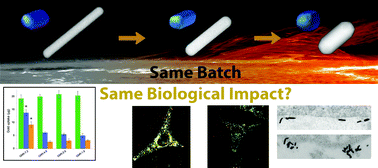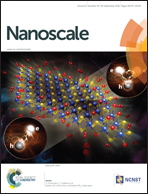Decoupling the shape parameter to assess gold nanorod uptake by mammalian cells†
Abstract
The impact of nanoparticles (NPs) upon biological systems can be fundamentally associated with their physicochemical parameters. A further often-stated tenet is the importance of NP shape on rates of endocytosis. However, given the convoluted parameters concerning the NP–cell interaction, it is experimentally challenging to attribute any findings to shape alone. Herein we demonstrate that shape, below a certain limit, which is specific to nanomedicine, is not important for the endocytosis of spherocylinders by either epithelial or macrophage cells in vitro. Through a systematic approach, we reshaped a single batch of gold nanorods into different aspect ratios resulting in near-spheres and studied their cytotoxicity, (pro-)inflammatory status, and endocytosis/exocytosis. It was found that on a length scale of ∼10–90 nm and at aspect ratios less than 5, NP shape has little impact upon their entry into either macrophages or epithelial cells. Conversely, nanorods with an aspect ratio above 5 were preferentially endocytosed by epithelial cells, whereas there was a lack of shape dependent uptake following exposure to macrophages in vitro. These findings have implications both in the understanding of nanoparticle reshaping mechanisms, as well as in the future rational design of nanomaterials for biomedical applications.


 Please wait while we load your content...
Please wait while we load your content...